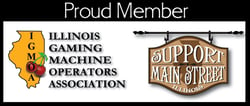Tipping and gratuities are built into the American restaurant industry. The system is set up to provide wages that meet or exceed that of the minimum wage. The idea is that servers will be able to make more this way and establishments will see higher profits. Tipping has seen its share of controversies over the years, but the idea of built-in gratuity brings a new wave of skepticism. Below, we will examine the pros and cons of built-in gratuity and how your location should go about deciding the right system for you.
What is Built-in Gratuity?
A built-in gratuity system is a service charge that is added to a group’s bill. It goes directly to the waitstaff providing the service to that group of customers. The charge generally ranges anywhere from 18-25% of the bill. A restaurant is encouraged to have its employees inform customers of this policy or print it on menus.
Benefits of This System
Adding gratuity into a bill is meant to make things easier for the customer. This is especially true for larger groups. If a large party has a hefty bill and requires more effort from the server, it is common to see this kind of system. The idea is to ensure that servers will be paid appropriately for such an effort. It can also be the case if the large group is splitting the bill. To avoid confusion and uneven gratuity, building it into the bill will avoid hassle and reward the servers fairly.
Another benefit of this system is the ease it provides to customers. If built-in gratuity is implemented, customers won’t have to pull out a calculator and determine how much they should tip. The standard percentage is still unclear. Some say 20% is the minimum, others argue 18% is the standard, and others may even believe 15% is fair for adequate service. But there are certain generous customers that feel 25% or even 30% should be the standard. The point is, we all have different interpretations of fair tipping. So if it is built-in, there will be no discrepancy.
An area that may be more efficient for the restaurant is accounting. If gratuity is worked into the final bill, filing taxes and reporting the numbers will be a lot easier since tips can make things tricker. Adding gratuity into the final bill will also avoid work on the restaurant’s part to make up for wages lost by low tipping. Making sure your staff feels valued is always a plus and it avoids confrontation with unruly customers.
Drawbacks That You’ll Encounter
While some believe automatic gratuity is a more efficient way of compensation, there are those who believe gratuity isn’t guaranteed. Just the idea of charging more on top of a bill already discourages customers from going out, but forcing them to pay a certain gratuity could cause conflict. Also, built-in gratuities are seen as restaurant income, not tips. This could limit what employees receive in a night as their bills are capped at a certain amount. The idea of tipping generally means a server has the opportunity to make more than what the minimum wage would pay them. So no matter what, the employee’s income will be set (for better or worse).
Disgruntled customers may pushback if they don’t agree with the automatic gratuity system. Customers value gratuity differently and generally have different rules of tipping. Being told what to pay on top of the cost listed on the menu could cause disagreements with the staff. This could lead to more conflict with customers that your staff won’t want to deal with. If a restaurant wants to implement this system, it is important to disclose the gratuity process before service starts.
Staff concerns are also a possibility. Not all servers will agree with built-in gratuity because it could discourage them from working harder for a larger tip. Providing top notch service is often a motivation for servers to earn a higher gratuity, so no matter how hard they work, they may only receive the set amount determined by the establishment. Employees may run into distrust with the restaurant if they do not believe they are receiving appropriate compensation.
What’s Best for Your Location?
The decision to implement built-in gratuity ultimately comes down to what’s best for your business. There are middle ground solutions to this scenario. Increasing prices to avoid tips would be one way to merge the philosophies. This would provide fair compensation but a more straightforward way of pricing. Tip sharing is also an idea, but this isn’t permissible in every state and you’ll have to rely on employees reporting tips honestly. Whether you come up with a hybrid solution or decide to try built-in gratuity, it’s best to run it by your staff to get their input. Each perspective has pros and cons, so being familiar with how your business is run and how your servers/customers feel about it could help determine the right decision for your business.



/The%20Winning%20Ticket%20%E2%80%93%20IL/2023/Gratuity.png)
_121_Full%20Color_ON%20BLACK-01.png?width=267&name=AE_MultiLogo(H)_121_Full%20Color_ON%20BLACK-01.png)
